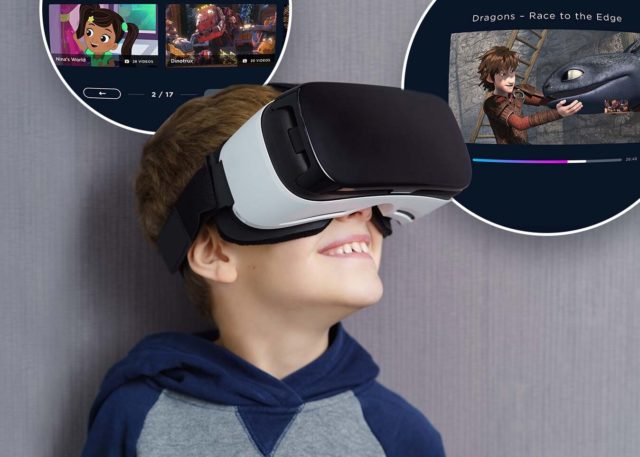
Luminopia recently published the results of a Phase 3 trial showing its video-based treatment improved vision in kids with amblyopia. Photo credit: Luminopia
With the results of a Phase 3 study, digital health startup Luminopia hopes to get Food and Drug Administration clearance for its video-based treatment for amblyopia.
The condition, also known as “lazy eye,” is one of the leading causes of vision loss in children, affecting up to 3% of kids. The brain starts to ignore input from one eye, leading to vision loss over time.
Most treatments available today involve corrective glasses, along with wearing an eye patch or using eye drops to blur vision in the dominant eye, forcing patients to use the affected eye. But many kids find these options uncomfortable, leading to poor adherence.
“We were shocked that these methods were the best things that we had for these conditions,” Luminopia CEO Scott Xiao said in a phone interview.
The company’s solution instead engages both eyes by modifying images in TV shows. Patients don a headset, which reduces the contrast of the image in their strong eye and removes parts of the image on each side, which encourages users to use both eyes to watch the show.
Patients are asked to watch TV for an hour, six days per week. Scott said the initial reaction from kids and parents was disbelief.
“It’s like making candy good for you,” he said.
The 12-week trial, published in Ophthalmology, found that patients who used Luminopia’s solution saw a significant improvement compared to those in the control group.
It’s important to note that the study was funded by Luminopia, and many of the researchers were Luminopia employees or paid consultants.
The study was conducted across 21 sites, where 105 children ages 4-7 were either instructed to use corrective glasses along with the Luminopia One, or only glasses. Some of them had tried other treatments in the past, such as patching.
The kids who used Luminopia’s digital therapeutic saw a 62% improvement in Best Corrected Visual Acuity in the amblyopic eye, compared to 33% in the control group. Additionally, most people who used Luminopia’s platform stuck with it, with an 88% adherence rate.
However, since the study compared Luminopia’s platform to only wearing corrective glasses, it’s not clear whether it works better than using an eyepatch or eye drops.
Regulatory plans
Luminopia submitted its application in March for its platform to be cleared through the FDA’s de novo pathway. Xiao hopes to hear back by the end of the year.
The company has struck partnerships with Sesame Workshop (the company behind Sesame Street) and animation studio Nelvana. It’s also in conversations with payers, with Xiao chalking up some positive feedback to a broader understanding of digital therapeutics as a category and interest in more options for early intervention.
Luminopia isn’t the only company looking to make treatments that are easier to take. Last year, Akili Interactive got FDA clearance for its video game-based treatment for ADHD.
“We’ve always believed from the beginning, if you’re creating at-home treatments, you have to create treatments patients would use whether it’s a treatment or not, because you’re competing with all of the other things they could be doing with their time,” Xiao said. “Folks like Akili have taken the video game approach and we’ve taken the video content approach but the theme is the same: We need to find a way to engage these patients in order to see good outcomes.”
Other startups are also looking to similar approaches to amblyopia. For example, Israeli startup NovaSight started a trial earlier this year comparing its TV-based treatment to patching, and Novartis bought another startup, Amblyotech, that is using games with 3-D glasses to treat the condition.








